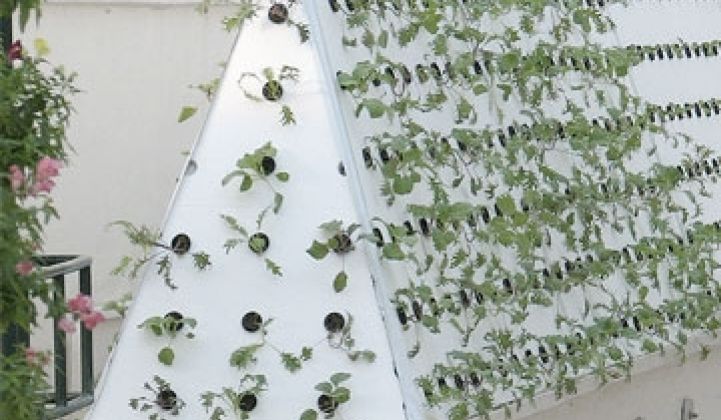America's farmers are aging. Averaging just under 60 years old, half of all current farmers are expected to retire over the next decade. And, despite scattered efforts to raise a new crop of agriculturalists, it is not at all clear who will fill the void these retiring farmers will leave behind.
Here's the thing: younger people are simply not interested in stepping into farmer John's work boots. The traditional farming lifestyle -- which is perceived as rural and isolated -- holds little attraction for them. Today's educated young people are searching for dynamic, exciting careers and the stimuli of contemporary urban life.
On another level, agriculture's idyllic, back-to-nature image has taken a hit in recent years. With controversial issues from GMOs to biofuels grabbing the headlines, farmers are no longer seen as the ultimate environmentalists. And with enormous agribusiness conglomerates dominating the industry, family farmers have increasingly been pushed aside.
Largely due to Big Agriculture, food safety and environmental issues have refused to go away. Meanwhile, soils are being depleted at an alarming rate, leading to heavy reliance on chemical fertilizers and pesticides. And with food often traveling thousands of miles just to reach our plates, agriculture is also a heavy contributor to global warming.
Then, of course, there is the economics. The younger generation is not exactly eager to eke out a laborious existence on the land, without being guaranteed at least a decent living.
All of this raises the question: who will feed America as its aging farmers begin to retire?
I believe that the yawning gap between the generations presents us with an excellent opportunity to revitalize American agriculture, while vastly upgrading the image of the American farmer. We can do this by growing our food in the places where the vast majority of us live -- in cities.
New technologies and techniques are revolutionizing the way we grow our food, creating a new form of agriculture that is not only attractive and sustainable, but also profitable. This new agriculture provides income year round, demands little water and zero pesticides and can be practiced anywhere in the world.
Technologies that meet these requirements already exist. Rooftop gardens are an example of an old idea that has been rediscovered by modern green architecture. Taken a step further, vertical gardens, grown in hi-rise structures, have been suggested as a means to reduce the footprint of an industry that currently occupies an area the size of South America (and is continuously expanding).
Aquaponics is a technique for producing fresh, organic fish and vegetables year-round, anywhere in the world. A combination of aquaculture and hydroponics, aquaponics allows farmers to grow fish and plant crops together in a single integrated, soil-less system. In these systems, fish waste fertilizes plants, while plants naturally filter water for fish.
Aeroponic farming, which uses mist to grow plants without soil, is another new technique. Grown indoors with LED lighting and without pesticides, aeroponic produce requires less than 10% of the water consumed by conventional agriculture. And because aeroponic farms are located in urban areas, transportation costs and carbon emissions are vastly reduced, as well.
Seen in this light, agriculture can become the solution to persistent urban problems. In every city in America, holes in the urban fabric contribute to the disintegration of communities. And while the world increasingly urbanizes, many mid-sized American cities are actually shrinking, with blight and crime filling in the gaps.
In cities like Buffalo, Detroit and Cleveland, urban agriculture has the potential to provide enterprising young people with a solid income, while strengthening communities and producing nutritious, affordable food. In larger cities, where space is at a premium, rooftops and spaces in hi-rise buildings could provide the "farmland."
Around the country, many people have already begun to realize the potential of urban farming. In New York, edible landscapes are appearing on green roofs, while in San Francisco, mulch is replacing highway exit ramps.
Will Allen, an urban farmer who produces a quarter of a million dollars worth of food on two acres in Milwaukee, won a "genius award" from the MacArthur Foundation in 2008 for his efforts.
Even the First Couple have become advocates of urban agriculture, with Michelle Obama building an organic garden on the White House lawn and the President touting urban agriculture as a means to revitalize cities.
Let's face it -- in an age of heightened environmental awareness, our society can no longer afford the environmental side effects of conventional farming, symbolized by the infamous 3,000-mile Caesar salad.
Gone are the days when farming must consume vast amounts of land, transporting goods over long distances, drying up rivers, and making meager profits. Instead of the old flannel-clad curmudgeon, tomorrow's farmers will be young, enterprising entrepreneurs. Instead of living in the middle of nowhere, they will live in the center of town, growing produce that is healthy, tasty and sustainable.
Farmer John would be proud.
Dr. Ed Harwood is founder and CEO of AeroFarms, which builds aeroponic systems for urban agriculture.



